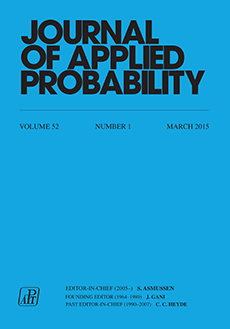Abstract
Let r and d be positive integers with r<d. Consider a random d-ary tree constructed as follows. Start with a single vertex, and in each time-step choose a uniformly random leaf and give it d newly created offspring. Let 𝒯d,t be the tree produced after t steps. We show that there exists a fixed δ<1 depending on d and r such that almost surely for all large t, every r-ary subtree of 𝒯d,t has less than tδ vertices. The proof involves analysis that also yields a related result. Consider the following iterative construction of a random planar triangulation. Start with a triangle embedded in the plane. In each step, choose a bounded face uniformly at random, add a vertex inside that face and join it to the vertices of the face. In this way, one face is destroyed and three new faces are created. After t steps, we obtain a random triangulated plane graph with t+3 vertices, which is called a random Apollonian network. We prove that there exists a fixed δ<1, such that eventually every path in this graph has length less than t𝛿, which verifies a conjecture of Cooper and Frieze (2015).
Citation
Andrea Collevecchio. Abbas Mehrabian. Nick Wormald. "Longest paths in random Apollonian networks and largest r-ary subtrees of random d-ary recursive trees." J. Appl. Probab. 53 (3) 846 - 856, September 2016.
Information





